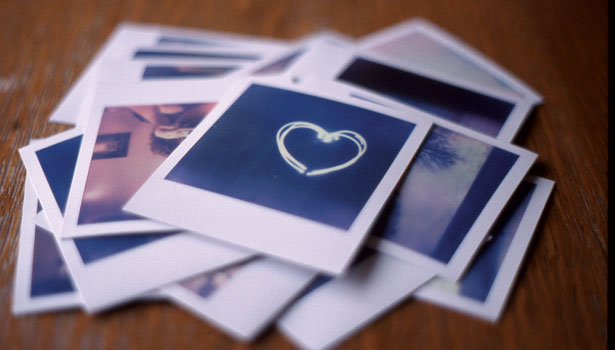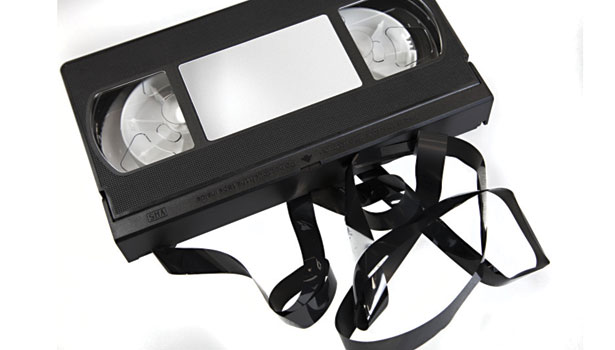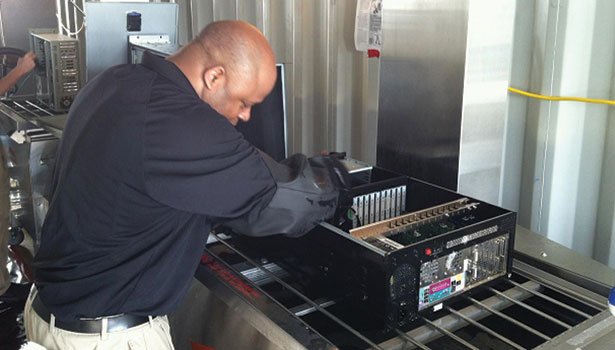The Amazing World of Media Restoration
Adjusters, long-time contractors and even self-styled “experts” will try to tell you that it is impossible to restore wet books, film, electronics and even photographs.
In some cases, they are right. Often, they are wrong.
Historically speaking, adjusters used to just shake their heads sadly when they saw water dribbling out the bottom of a big screen TV or a laptop computer. But today such things are being routinely restored with exceptional results.
The big companies that perform electronics restoration are claiming about an 85% success rate and anywhere from 10% to 30% of the replacement cost. Many adjusters don’t believe it until they see it for themselves, but once they do, the company that saved them all that money becomes their “go-to” restoration firm for many more such jobs.
So, how do you do it?
First off, ignore everything you have read on the Internet. Do not attempt to restore a computer hard drive with lemon juice, baking soda or vodka! Rice is a pretty good desiccant, but it does not belong inside the delicate components of the family’s 50-inch screen.
There are several factors that will affect how well you can restore water-damaged electronics. But the most important is that you have to impress upon the adjuster, building manager, etc. that you need to get to the unit(s) right away. When moisture mixes with ash, it forms an acid that can eat electronic components, thereby rendering the computer, printer, television, fax machine or monitor useless in as little as 72 hours.
Next, you have to “flush out” the acids, so the most successful companies often use a “spray cabinet” with an attachment that looks somewhat like the sprayer you find as an option on many kitchen sinks. Use de-ionized water because ordinary tap water contains many minerals that can leave a residue that will short out the machine as soon as it is turned on.
And speaking of shorts – when you first accept the assignment, tell everyone who will listen not to switch the machine on to test it. We have found that it is almost a compulsion by the owner to try it out “just to make sure.” Odds are good that once they’ve activated the electronics, your services will no longer be necessary.
With some electronics, you will have to remove the casing of course, but it may be necessary to remove a few internal components to make sure your spray is reaching all the vital areas – be sure to get some training so you know what you can and should remove as well as what you can’t.
So, can you make any money with such expensive equipment? Well, we know about a company in Louisiana that restored over $4 million in electronics from a single building. We are guessing they earned their fee!
As co-founder of Total Contentz, Barb Jackson, CR, helps disaster restoration professionals improve their contents processing capabilities with the latest technology and procedures. She offers consulting and training services for full-service restorers and specialized cleaning contractors. You can reach her at barb@totalcontentz.com.
Thinking Outside of Freeze Drying
?Freeze drying became the darling of public agencies following a flood years ago at the Corning Museum Library, when films, negatives, photographs and slides were inadvertently packed along with thousands of books for freeze drying. As it would turn out, the aforementioned media was restored well. A separate situation detailed thousands of X-rays that were freeze-dried and restored to pre-loss condition during a situation at a hospital.
?But if your contents division is anything like mine, you don’t have a freeze drying machine - you have to get clever instead!
?We always have the names of experts and specialists in our “million dollar data base” for unique cases that require people with capabilities and credentials that are beyond those of my team. But in a far more typical case, let’s say that a family album has been saturated by fire hoses and baked by a fire, but is still more-or-less recognizable?
?The adjuster likely won’t pay the extraordinary cost of freeze-drying for photos of Fluffy the dog or of Uncle Fred’s wedding – and the family is likely to be unhappy about this. What can you do?
?Wet photos can be kept wet, but color pictures start to separate in about 48 hours, often turning to celluloid confetti by the third day. What we do in these situations is scan photos into a computer and present the finished disc to the family as the team goes about restoring as many other items as possible.
?It’s usually very appeasing to the family, as they can enlarge the now digital pictures. It’s also a simple fix that sits well with adjusters the next time they’re ready to assign a contents job.
?For an extra bonus, arrange for the family’s insurance agent to present the finished CD to the family. The agent will get brownie points when it’s time for renewal and you’ll look good for thinking of this unique way to retain the family’s memories.
Old Media
Technically, VHS cassettes contain magnetic tape and not film, but when a collector is red-faced and arguing with the adjuster over his collection’s replacement worth, there are a couple of things that can be done.

If the collection is actually a series of bootlegged downloads the owner made decades ago when “I Dream Of Jeannie” was just coming out in reruns, you might settle the dispute by simply going online, checking Amazon® and privately informing the adjuster that there is a used set of “I Dream Of Jeannie” DVDs for $29.95!
But let’s say you really want to take a shot at saving the original VHS tapes. We have seen some well-meaning (i.e. untrained) workers stuffing wet VHS tapes into the homeowner’s freezer to preserve them until something can be decided, the idea being that it will stop the degradation process the same way it does with wet books.
To put it mildly, they are wrong! Freezing video tape can actually cause the oxide to disintegrate and “delaminate,” leaving something that resembles a strip of cellophane tape that isn’t sticky and has nothing on it at all!
We have seen contents pros open VHS cases, flush out the tape with deionized water and dry it in heating chambers, but it is usually at best a 50/50 proposition – especially after the videos have been exposed to heat. But if you are lucky enough to get the tape to function, instead of trying to save it as it is, try transferring the contents to more stable media like a DVD or computer stick.
Electronics and Ultrasonics
Electronics can be cleaned safely and thoroughly with ultrasonics. Early manufacturers of circuit boards began utilizing ultrasonic cleaning as a method to clean the debris, known as flux, caused by soldering components. With advances in technology and the proliferation of electronics, ultrasonic cleaning has become a regular tool for manufacturers and a cleaning service for which there is great demand.
Ultrasonic cleaning for electronics was introduced to the restoration industry nearly 30 years ago and customers of such equipment have been taught how to gently and quickly restore all types of electronics for as many years. The process is simple, and for most electronics with a few exceptions, there is little disassembly that needs to take place. Here’s how it works:
• In the appropriate sized cleaning tank, with the proper frequency, proper temperature and proper chemical, place the electronic component into the bath. Dwell time will vary from 30 seconds to 2 minutes.
• Remove, rinse with de-ionized water or utilize a proper di-electric chemical.
• Place the electronics in a drying cabinet/room. Just as with cleaning, there are parameters required (temperature, relative humidity, etc.) for proper drying of electronics. If done correctly, dry time for electronics can be reduced to only a few hours.
Still think it can’t be done? See the photo attached to this sidebar - it was taken during an on-site electronics cleaning job at the Pacific Naval Base in Hawaii. Thousands of computers and other sensitive, specially-built pieces of equipment became soot-damaged in a fire. This equipment controls the United States missile defense in that region of the country. Accordingly, top government officials and scientists signed off on this process before the job was approved. The ultrasonic line was brought in a trailer and utilized right outside the facility. When the job was complete, all equipment was restored to working condition.
-Lisa Morantz, Morantz Ultrasonics
Looking for a reprint of this article?
From high-res PDFs to custom plaques, order your copy today!





